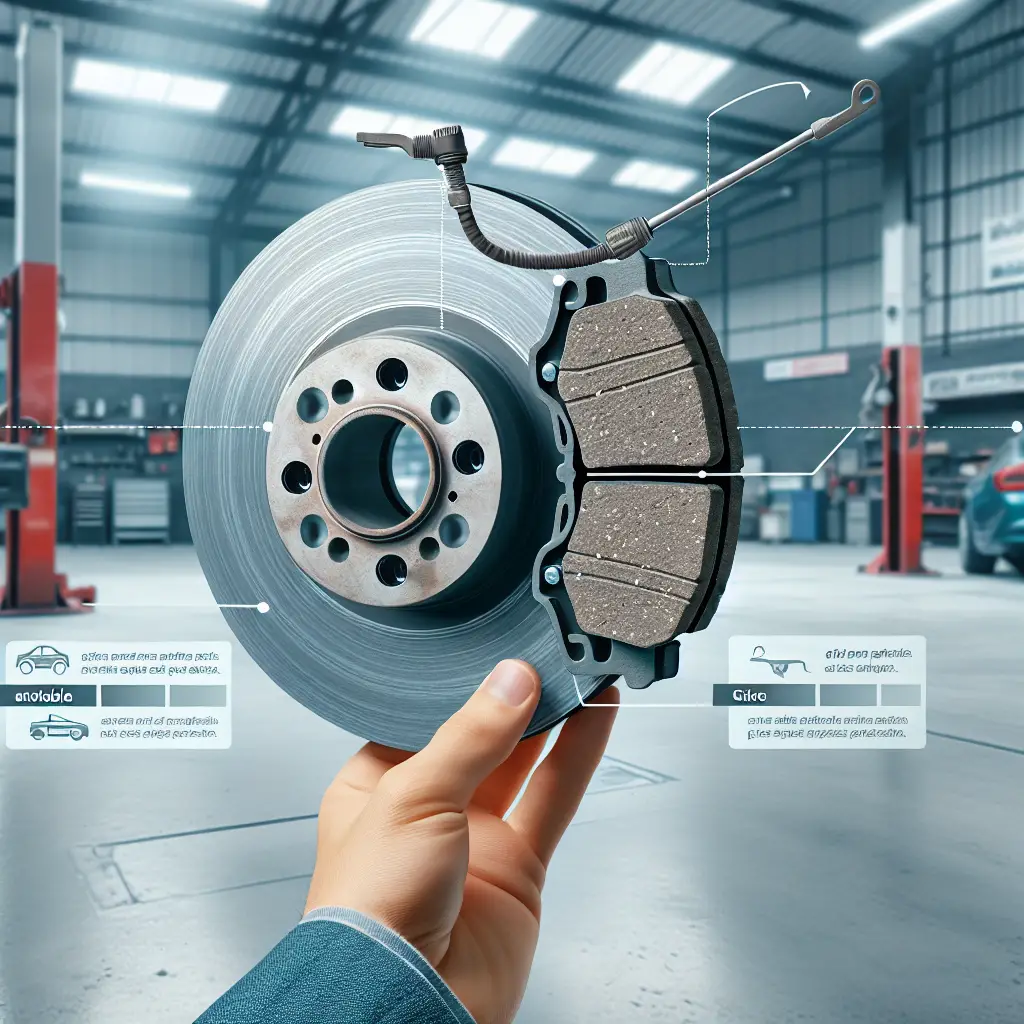How Close Should Brake Pads Be to Rotors?
When it comes to vehicle maintenance, understanding the gap between your brake pads and rotors is crucial for ensuring your safety on the road. It’s a topic that might not grab headlines, but for those who appreciate the intricacies of automotive care, it’s essential knowledge. So, how close should brake pads be to rotors? Let’s hit the brakes on uncertainty and delve into the specifics.
The Ideal Distance: A Matter of Millimeters
Firstly, it’s important to grasp why this distance matters. Brake pads are a critical component of your braking system, pressing against the rotors to create the friction required to slow down your vehicle. The distance between the brake pad and rotor—technically referred to as the “pad-to-rotor clearance”—needs to be just right.
Ideally, brake pads should be about the thickness of a credit card away from the rotor—this is typically around 0.3 to 0.7 millimeters. This minuscule gap allows the brake system to engage quickly without undue wear on the components. Though seemingly inconsequential, this measurement can be the difference between a responsive braking system and one that’s sluggish or overly aggressive.
Understanding Brake Pad Wear
As your vehicle’s brake pads wear down, the gap between the pads and rotors changes. The brake caliper piston extends further to maintain contact, which can result in a larger gap when the brakes are disengaged. It’s important to monitor brake pad wear regularly to ensure that they remain within the manufacturer’s recommended specifications.
The tell-tale signs of worn brake pads include a squealing noise, diminished braking power, or a longer stopping distance. When these symptoms appear, it’s time to inspect your brakes and replace the pads if necessary.
Adjustments and Inspections: A Technician’s Role
If you suspect that your brake pad gap is off, it’s best to have a professional technician take a look. Professional inspections involve removing the wheels and measuring the pad thickness and rotor surface. They will also check for any uneven wear or damage that could affect the braking performance.
Technicians can adjust the calipers to ensure optimal pad-to-rotor clearance. Advanced braking systems, particularly those in modern cars, may have self-adjusting mechanisms that maintain this clearance automatically, but regular inspections are still advisable.
The Consequences of Incorrect Pad-to-Rotor Clearance
If the brake pads are too close to the rotors (a gap less than 0.3 millimeters), the constant contact can generate heat and wear both components down prematurely. This scenario often leads to a phenomenon known as “brake fade,” where the efficiency of the brake system is reduced, particularly under heavy usage.
Conversely, too large a gap (greater than 0.7 millimeters) can lead to delayed brake engagement, causing your vehicle to take longer to stop and potentially leading to unsafe driving conditions. It can also contribute to an annoying rattling noise as the brake pads have too much room to move within the caliper.
DIY Checks and Maintenance Tips
For those who prefer a more hands-on approach to vehicle maintenance, there are DIY brake pad check methods that can give you a rough idea of your brake pad wear:
- Perform a visual check: Look at your brake pads through the openings on your wheel rim. There should be at least 1/4 inch of pad visible. If there’s less, it’s time for a replacement.
- Listen as you drive: Be aware of any high-pitched squeals or metal-on-metal grinding sounds as these are indicators that your brake pads may need immediate attention.
Remember, performing your own brake checks should not replace professional inspections, as only a trained technician can make the precise adjustments needed to ensure your braking system is operating optimally.
Final Thoughts: The Key to Safety and Performance
The pad-to-rotor clearance in your braking system isn’t just a tiny technical detail—it plays a significant role in ensuring the safety and performance of your vehicle. Regular maintenance, awareness of wear indicators, and timely inspections by professionals are all part of responsible vehicle ownership.
Keep the information above in mind, and your next brake check will be about maintaining that credit-card-thin gap that stands between responsive braking and a potential safety hazard. Your attention to detail could potentially save lives—including your own.
Now that you understand the importance of the distance between brake pads and rotors, ensure that you schedule regular check-ups for your vehicle’s braking system. Your diligence is the drive behind your safety.
I hope this has helped illuminate the finer points of brake pad clearance for you. Stay informed and stay safe on the roads!

